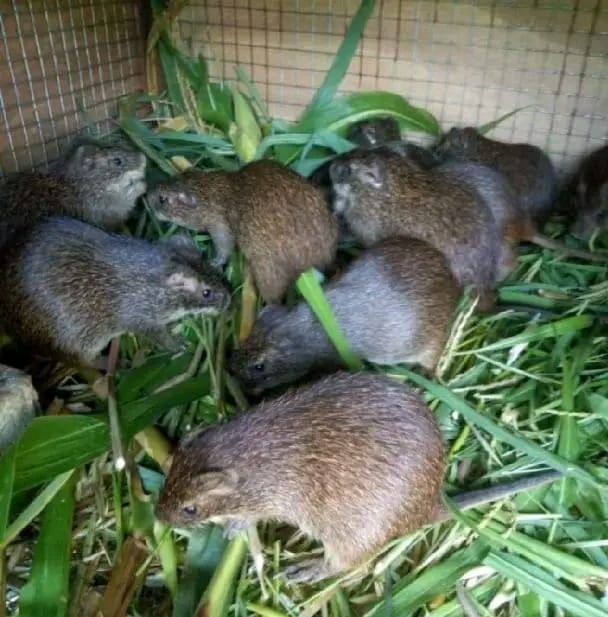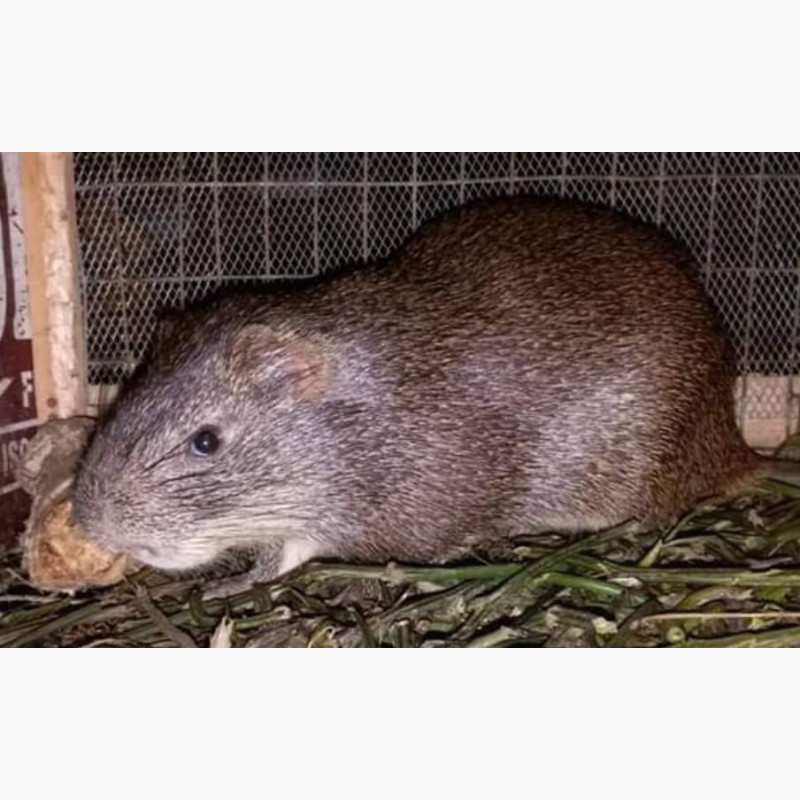Introduction
Grasscutter farming is a lucrative agricultural business in Nigeria, providing sustainable source of protein and income for entrepreneurs. Also known as cane rats, grasscutters are large rodents that feed on grasses and other vegetation. With the increasing demand for bush meat in Nigeria, grasscutter farming has become a viable investment opportunity.
Grasscutter farming is gaining popularity in the country due to its profitability and low setup cost. This agribusiness offers an excellent opportunity for both small-scale and large-scale farmers. Grasscutters are highly sought after in Nigeria and other parts of West Africa for their tender, high-protein meat, which is considered a delicacy in many communities. With an increasing demand for alternative sources of meat, grasscutter farming presents a viable option for individuals seeking to invest in agriculture.
Why grasscutter farming?
- High demand for grasscutter meat: Grasscutter meat is highly prized in the Nigerian cuisine. It is seen as a healthier alternative to red meat due to its low-fat content and high protein value. This demand makes it a lucrative business, especially for farmers, who can establish a consistent supply chain.
- Low start-up and maintenance costs: Compared to other livestock farming, grasscutter farming requires minimal capital and space. Grasscutters are manageable and do not need extensive housing, as they thrive in a small, clean, and well-ventilated environment.
- Rapid reproduction rate: Grasscutters have a short gestation period of about 150 days and can birth several litters annually. With proper breeding techniques, a pair of grasscutters can quickly multiply into a sizable herd, ensuring a steady supply of meat to meet market demand.
How to start grasscutter farming in Nigeria
- Conduct market research: Before diving into grasscutter farming, it is essential to research the local market. Identify potential buyers, including local restaurants, meat processors, and individual consumers. Understanding demand and pricing will help shape your production strategy.
- Acquire suitable land of at least, one-quarter acre: Grasscutters need a clean, quiet environment free from predators and extreme weather. You can start with a small pen or cage measuring approximately 1.2m x 0.6m x 0.6m, which can house a family of grasscutters of usually one male and four females. Good housing should have proper ventilation to prevent respiratory illnesses, concrete floor or metal mesh, to prevent them from burrowing out, and nesting boxes for breeding females.
- Select high-quality breeding stock: Choose healthy, disease-free grasscutters from reputable breeders. When selecting grasscutters, look for animals that are active, have shiny fur, and are free from wounds or infections. Starting with a small number, such as one male and four females, is advisable for new farmers, as it allows them to learn the process and monitor growth before expanding.
- Feeding and nutrition: Grasscutters are herbivores, feeding primarily on grasses, leaves, and farm by-products like maize, sugarcane, and cassava. Proper feeding is crucial, as it impacts their growth and reproductive rate. In addition to their natural diet, it is beneficial to include commercial pellet feed for added nutrients. Grasscutters need constant supply of clean water. Supplements like calcium and other mineral supplements can also be added to their feeding for bone strength, especially for pregnant and nursing females.
- Health management: Grasscutters are relatively hardy animals, but they can be susceptible to certain diseases. Cleanliness is key to preventing respiratory infections and other common ailments. Ensure the pen is cleaned regularly, and inspect the animals frequently for signs of illness. In the case of disease outbreaks, consult a veterinarian for treatment and consider isolating sick animals.
- Breeding techniques: Effective breeding techniques can significantly improve productivity in grasscutter farming. Female grasscutters reach reproductive maturity at around five to six months, while males mature by eight months. Here are some breeding tips: Pair one male with multiple females to increase the litter rate, ensure the breeding pen is quiet and stress-free, as noise can interfere with successful mating, and once pregnant, a female should be separated to reduce stress and allow her to nurse her young after birth.
- Marketing and selling grasscutters: There is a thriving market for grasscutter meat in Nigeria, both in rural and urban areas.Here are some marketing tips:
Local markets and restaurants: Establish connections with restaurants that serve bushmeat. Grasscutter meat is often preferred for its taste and tenderness.
Direct to consumer sales: Consider selling directly to consumers, who might prefer to buy live animals for ceremonial events or personal consumption.
Social media: Use social media platforms to reach a wider audience and educate potential buyers about the nutritional benefits of grasscutter meat.

Key challenges facing grasscutter farming
- Climate sensitivity: Grasscutters are sensitive to extreme temperatures, which can cause stress and reduce productivity. Proper housing and management practices are essential to keep them comfortable, all-year-round.
- Initial learning curve: As with any farming venture, there is a learning period, especially for beginners. New farmers may face challenges in managing breeding, feeding, and disease control.
- Disease outbreaks: Grasscutters can be prone to respiratory illnesses, especially in poorly ventilated pens. A consistent hygiene routine and timely veterinary intervention is crucial for disease prevention.
Maturity period of grasscutter
Grasscutters typically take six to eight months to mature, with females reaching reproductive age at five to six months. They have a gestation period of 143-150 days and can breed twice a year, producing two to eight pups per litter.
What is the best food for grasscutters?
Grasscutters are herbivores and require a diet rich in fiber. The best foods for grasscutters include:
- Elephant grass
- Guinea grass
- Sugarcane
- Cassava leaves
- Plantain leaves
- Concentrate feeds (e.g rabbit pellets)
Where to buy grasscutters in Nigeria
You can buy grasscutters from:
- Local breeders
- Agricultural universities
- Research institutions
- Online marketplaces (e.g FarmCrowdy, AgricHub)
Profitability of grasscutter farming in Nigeria
Grasscutter farming can generate significant revenue, with potential profits ranging from ₦500,000 to ₦2,000,000 (approximately $1,300-$5,200 USD) per annum, depending on farm size and management
How much is a colony of grasscutters in Nigeria?
A colony of grasscutters typically consists of 2-5 males and 10-20 females. The cost of a colony varies depending on the location, size, and quality, but expect to pay between ₦200,000 to ₦500,000 (approximately $520-$1,300 USD).
Grasscutter prices in Nigeria
Live grasscutters: ₦5,000 – ₦10,000 (approximately $13-$26 USD)
Frozen grasscutters: ₦3,000 – ₦6,000 (approximately $7.80-$15.60 USD)
Is grasscutter farming profitable in Nigeria?
Yes, grasscutter farming is profitable in Nigeria. With an initial investment of ₦500,000 to ₦1,000,000 (approximately $1,300-$2,600 USD), you can establish a grasscutter farm. Each grasscutter sells for ₦5,000 to ₦10,000 (approximately $13-$26 USD), depending on size and quality. Grasscutter farming, with proper management can generate significant revenue, with potential profits ranging from ₦500,000 to ₦2,000,000 (approximately $1,300-$5,200 USD) per annum, depending on the farm size and management.
Conclusion
Grasscutter farming is a profitable and scalable agribusiness in Nigeria. It is an ideal venture for those looking to start with minimal capital and expand, as they gain experience. With proper care, breeding, and marketing strategies, grasscutter farming can provide a steady income stream while meeting the rising demand for this delicacy across Nigeria.


4 Comments
Grasscutter business is quite lucrative if you have available buyers for it. I enjoy the meat a lot
Grass cutter business also entail a lot of expertise, so learn from a good source
The business will boom if it has the right consumers that requires it frequently.
Grasscutter Colony Price list consist of 5 grasscutters each 4 female and 1 male, KINDLY REACH OUT TO US VIA: Call/WA me on +2348132178286 to place your order for fast and safe delivery, this are the current price list 2025
3 months old is 40,000 naira
4 months old is 48,000 naira
5 months old is 57,000 naira
6 months old is 66,000 naira
7 months old is 75,000 naira
8 months old is 84,000 naira
Pregnant ones is #98,000 ( 5 pregnant grasscutter)
Point to Birth – #120,000 ( 5 pregnant grasscutter 2weeks to put to birth point grass cutters) We also have the complete E-Book and self tutorial VCD including online WhatsApp group to ask any question and get immediate respond for ₦15,000, This will help beginners educate their self on everything concerning Grasscutter farming A-Z. We are located after local government Secretariat, Off Ata road, Imeko, Ogun State. PLEASE NOTE: Our Booking/delivery Days are Tuesdays, Thursdays and Saturdays while the maximum time we give to customers to receive their order is 2 to 5 days from booking time depends on location, All customers should buy with confidence we guarantee you healthy and medicated livestock including proper delivery safety to your provider address, Once you receive and confirm your order Kindly call to informed us if you are satisfied with our product/delivery service before the driver takes off.